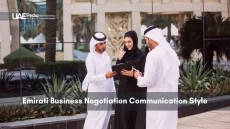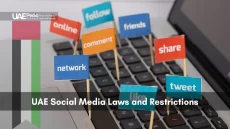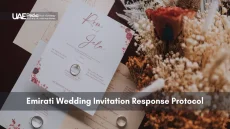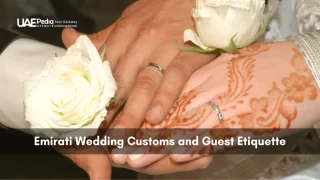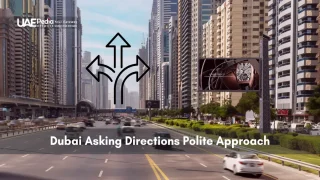What if following the rules of the road meant more than just obeying signs? In a place where sleek highways meet centuries-old customs, every turn reveals how culture shapes the journey. The UAE’s roads aren’t just about getting from A to B—they’re a dance between cutting-edge systems and unspoken courtesies.
You’ll notice something unique here: flashing headlights often mean “after you,” not frustration. Speed limits stretch across desert highways, but patience remains non-negotiable in bustling cities. Even with strict seat belt laws and red-light cameras, there’s room for small gestures that keep the flow harmonious.
This balance isn’t just for locals. Visitors quickly learn that merging lanes requires both sharp awareness and a dash of generosity. Safety isn’t only about your vehicle’s condition—it’s reading the rhythm of drivers around you. And trust us, that rhythm has its own beat.
We’ve road-tested every tip in this guide, from decoding roundabout etiquette to handling summer sandstorms. Consider it your friendly co-pilot for exploring with confidence—and a few knowing smiles along the way.
Dubai operates left-hand-drive, right-side traffic with strict enforcement: red-light cameras (AED 1,000 + 12 black points), mandatory seat belts (AED 400 per violation), zero alcohol tolerance, and automated Salik tolls. Posted limits are 100–120 km/h on highways, 60–80 km/h in urban cores; radar fines scale from AED 600 to 3,000.
Defensive driving is essential—signal early, yield to merging traffic, avoid rude gestures (AED 500+ fines), and pull over immediately for emergency vehicles. Download the RTA or police app for live speed-limit and camera alerts; maintain tires and A/C for 45 °C summers.
Key Takeaways:
- Courtesy keeps Dubai’s traffic flowing.
- Speed limits adapt to environment.
- Fines deter unsafe driving behaviors.
- Signals and gestures show respect.
- Cultural norms influence road manners.
- Tech tools assist real-time navigation.
Understanding Dubai’s Driving Landscape
Ever wonder why merging onto a ten-lane highway feels oddly graceful here? The country’s roads tell a story where ancient hospitality meets tomorrow’s engineering. You’ll notice something subtle: drivers often pause to let others pass—not because signs demand it, but because respect threads through every lane.
Cultural Rhythms Behind the Wheel
Islamic values shape more than architecture here. On the road, patience isn’t just a virtue—it’s practiced daily. During Ramadan, you may find slower evening flows as families gather, while Friday prayers bring quieter streets near mosques. This unspoken harmony extends to how locals treat emergency vehicles, yielding instantly without a siren’s prompt.
Expatriates add their own flavors. A taxi driver from Mumbai might wave you ahead with a smile, while a European resident mirrors roundabout manners from home. Yet beneath this diversity lies shared ground: honking is rare, and aggressive moves earn frowns, not mimicry.
Driving in Dubai transcends mere transportation—it’s a daily practice of respect, patience, and cultural harmony Ref.: “Aetna International. (2024). Everything you need to know about driving in Dubai. Aetna Health Guide.”
Steel and Sandstone: Roads That Reflect Heritage
Those sleek overpasses? They’re designed with desert wisdom—elevated to let sandstorms pass underneath. Speed limits (think 100-120 km/h on highways) balance efficiency with safety, while adaptive traffic lights adjust for prayer times. Even seat belt laws get a cultural twist: buckling up shows care for community, not just compliance.
Urban planners wove tradition into asphalt. Near heritage sites, reduced speed zones protect both history and pedestrians. And those flashy digital signs? They’ll remind you to check your tires in summer—a modern nudge rooted in Bedouin preparation rituals. As one engineer told us: “Good roads respect the land they’re built upon.”
Read More:
Dubai Traffic Etiquette Driving Customs: Key Dos and Don’ts
Imagine a highway where courtesy is as vital as your brake lights. Here, every lane change and turn signal carries weight—not just for safety, but for keeping the social fabric intact. Let’s unpack the essentials that’ll keep you smiling (and penalty-free).
Traffic violations in Dubai come with strict consequences—fines, black points, and potential vehicle impoundment are real risks for non-compliance Ref.: “Dr. Cars. (2025). Top 10 Driving Rules and Safety Tips in Dubai. Dr. Cars Automotive Guide.”
Following Traffic Signals and Respecting Authority
Red means stop—no exceptions. Cameras snap violations instantly, with fines starting at AED 1,000. Seat belts? Non-negotiable for all passengers. One officer told us:
“Safety isn’t a solo act here. Buckling up shows you value everyone’s journey.”
Yellow lights aren’t challenges. Speed through, and you risk 12 black points plus vehicle impoundment. Always pull over calmly for emergency vehicles—hesitation can cost lives.
Mindful Behavior Behind the Wheel
Keep gestures polite. A raised fist could cost AED 500. Honk only to prevent danger, not to vent frustration. Tailgating? That’s a fast track to fines and frayed nerves.
When someone cuts you off, breathe deep. Aggressive reactions escalate tensions. Use indicators early, and let merging cars in—it’s the unspoken rhythm locals respect.
| Behavior | Action | Potential Penalty |
|---|---|---|
| Running red light | Stop completely | AED 1,000 + 12 black points |
| Unbuckled seat belt | Secure all passengers | AED 400 per violation |
| Rude gestures | Keep hands calm | AED 500 + possible detention |
Pro tip: Download the official police app for real-time alerts. It’s like having a co-pilot whispering “Psst… speed camera ahead!”
As of 2023, Dubai Police introduced new traffic fines ranging from AED 10,000 to AED 100,000 for serious violations. Reckless driving now incurs AED 2,000, 23 black points, and 60-day vehicle impoundment. License suspension occurs at 24 black points within 12 months. Ref.: “Albanna Advocates. (2025). New UAE Traffic Law Fines and Imprisonment Guide 2025.”
Mastering Speed Limits and Road Safety in Dubai
What if every speed limit told a story of safety and heritage? Those numbers on roadside signs aren’t random—they’re calculated blends of engineering, environment, and local wisdom. Let’s explore how to move smoothly between fast lanes and tight urban grids.
Highway Guidelines: 100-120 km/h Explained
Open roads here stretch like ribbons across desert vistas, but they’re not free-for-alls. The 100-120 km/h range balances efficiency with reaction time—crucial when sand sweeps across asphalt. As one transport official shared: “These numbers let you glide while keeping the horizon in focus.”
Exceeding speed limits by 20-30 km/h results in AED 600 fines, while violations over 80 km/h trigger AED 3,000 penalties. Smart cameras enforce these limits automatically, with fines increasing progressively based on severity. Speed-related incidents account for 57% of UAE crashes. Ref.: “Excellence Driving. (2025). Dubai Traffic Fines & Black Points (Complete List 2025). Excellence Driving.”
Smart cameras enforce these boundaries. Exceed 120 km/h by just 20? That’s AED 600. Push 80 over? Fines rocket to AED 3,000. Yet most drivers stick to the sweet spot—you’ll notice cruise control commonly set at 118.
City Driving: Managing 60-80 km/h and Beyond
Downtown shifts gears. Lower limits (60-80 km/h) protect pedestrians and cyclists weaving through business districts. Watch for digital signs that adjust dynamically during rush hours or fog—they’re your real-time co-pilots.
| Area Type | Speed Limit | Common Fine Range |
|---|---|---|
| Highways | 100-120 km/h | AED 600 – 3,000 |
| Residential Zones | 40-60 km/h | AED 400 – 1,000 |
| Business Districts | 60-80 km/h | AED 800 – 2,000 |
Pro tip: Sync your phone’s GPS with the Roads and Transport Authority app. It pings you when limits change—like a friend nudging your elbow before a speed trap. And remember: those flashing roadside radars? They tally violations instantly, but also display polite reminders like “Check your dash—you’re cruising at 117!”
Practical Tips for Navigating Dubai Roads
Ever found yourself in a maze of honking cars and cryptic parking signs? Urban navigation here demands equal parts patience and strategy. Let’s crack the code together.
Handling Congestion, Honking, and Parking Etiquette
Rush hour can test anyone’s calm. Locals swear by leaving 15 minutes early—it’s the golden buffer between stress and smooth sailing. One driver shared: “When tempers flare, I play my favorite playlist. Makes gridlock feel like a concert intermission.”
Parking? Read those signs like your coffee order. Colors matter:
| Zone Color | Time Limit | Fine Example |
|---|---|---|
| White | Free (2 hrs) | AED 150 overtime |
| Yellow | Commercial only | AED 300 violation |
| Teal | Paid (4 hrs) | AED 200 unpaid |
Signal early when merging—it’s the universal language for “I see you.” Forgot your parking ticket? Apps like RTA Dubai let you pay remotely. Smart move: Snap a photo of your spot number. Those digits vanish faster than shade in July.
Vehicle maintenance isn’t optional here. Summer heat cracks tires and drains batteries. Certified shops offer free pressure checks—grab one monthly. As the local driving rules state, roadworthy cars prevent 37% of warm-weather breakdowns.
Last tip? Breathe. When horns blare, assume it’s enthusiasm—not anger. That mindset shift turns chaos into community.
Strategic planning—like leaving 15 minutes early and using digital parking apps—can significantly reduce driving stress in Dubai Ref.: “EV Powered. (2024). Everything you should know about Dubai driving rules. Transportation Technology Magazine.”
“Learn About: Dubai Public Transport Etiquette for Metro“
Driving Smart: Final Insights for Dubai Roads
Ready to turn knowledge into smooth-sailing action? Mastering local roads blends sharp awareness with cultural mindfulness—like learning a new dance where every step matters. Start with your car: regular tire checks and AC maintenance aren’t just suggestions. They’re your armor against summer heatwaves and sudden sand showers.
Those flashing red lights and speed signs? Treat them as trusted friends, not foes. Stick to posted limits—they’re calculated using weather data and accident stats. One local mechanic told us: “A well-tuned engine respects both the desert and the dashboard.”
Penalties here mean business, but avoiding them is simple. Signal early, leave space between vehicles, and download official apps for real-time updates. Most fines stem from preventable mistakes—like forgetting headlights during fog or missing parking payments.
Successful navigation of Dubai’s roads requires a holistic approach—combining legal knowledge, cultural understanding, and adaptive driving skills Ref.: “UAE Legislation. (2024). Federal Decree-Law On Traffic Regulation. UAE Government Legislation Portal.”
Adaptability wins. Shift gears between highway confidence and city patience. Notice how drivers merge like synchronized swimmers? That’s the sweet spot between rules and respect. Keep your eyes on shifting conditions, from sudden rain to Friday prayer quiet hours.
Smart navigation isn’t just about maps—it’s embracing the rhythm of a place where tradition meets innovation. For more insider routes and updates, uaepedia.net remains your go-to guide. Now buckle up, adjust those mirrors, and enjoy the ride—every mile here tells a story worth experiencing.
Absolutely. Exceeding 120 km/h on UAE highways triggers AED 300–3,000 fines and black points. Speed cameras flash instantly, so treat that 120 marker like an invisible wall—approach with care!
More than you’d expect! Emirati drivers prioritize pedestrian safety near malls and residential zones. Always wait for eye contact or a wave—never assume they’ll brake if you dash unexpectedly.
Blaring horns in gridlock won’t win friends. Emiratis view unnecessary noise as disrespectful. Save honks for genuine hazards—think wandering camels, not slow mergers.
Yes, and enforcement intensified in 2023. Drivers face AED 400 fines per unbelted passenger. Even short rides demand clicks—safety trumps convenience here.
Go slow, use hazards, and embrace the “shukran wave” if someone waits. Many lots have attendants for AED 5–10 tips—worth every dirham to avoid scratched rims!
A>: They’re equally vigilant. Jumping signals brings AED 1,000 fines, 12 black points, and potential impoundment. Treat amber lights as red—patience beats regret.
Only at designated spots marked by blue signs. Illegal U-turns risk AED 500 fines. When unsure, drive ahead and reroute via the next intersection.
Nope—same rules apply. Rentals often include speed alerts. Exceed limits and you’ll pay penalties plus the agency’s admin fees. Cruise control is your desert highway BFF.






